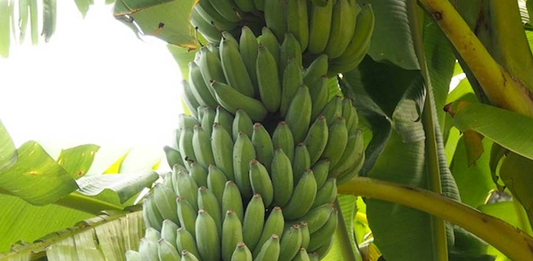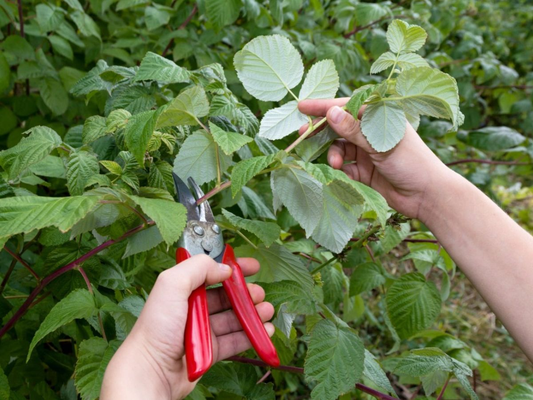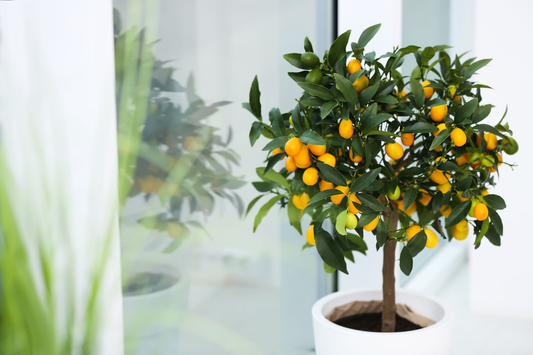How to Propagate Succulents Indoors: Turn One Plant into an Entire Garden!
Share
Table of Contents
1. Introduction: Why Propagate Succulents Indoors?
Succulents have taken the indoor plant world by storm, becoming beloved additions to homes, offices, and even restaurants. These charming plants, known for their fleshy leaves that store water, are not only low-maintenance but also come in a wide range of unique shapes, colors, and sizes. Their popularity has soared due to their easy care and ability to thrive in indoor environments with minimal sunlight. But what makes succulents even more appealing is the ability to propagate them indoors, creating a lush garden from just a few plants.
So, why should you consider propagating succulents indoors? Here are some of the benefits:
-
Cost-Effectiveness:
- Purchasing new succulents can be expensive, especially if you want to grow a diverse collection. Propagation allows you to expand your collection without spending a lot of money.
- It’s an affordable way to get more plants from the ones you already own, making your garden more expansive and beautiful at little to no cost.
-
Variety and Customization:
- Through propagation, you can experiment with different species and varieties of succulents, creating a more personalized plant collection.
- You have the ability to choose the ideal succulent variety for your indoor space, tailoring your collection to fit your home’s aesthetic.
-
The Satisfaction of Growing Your Own Collection:
- There’s something deeply satisfying about nurturing a plant from a single cutting or leaf into a thriving, full-grown succulent.
- It allows you to experience the growth process firsthand, connecting you more deeply with the plants you care for.
By propagating succulents indoors, you can transform your living space into a green paradise, all while enjoying the rewards of creating your own thriving indoor garden from just a single plant.

2. What You Need to Know Before Propagating Succulents Indoors
Before you start propagating succulents indoors, there are a few things you should know to ensure your efforts are successful. Choosing the right plant, understanding propagation basics, and having the necessary tools will set you up for success.
-
Choosing the Right Succulent for Indoor Propagation
Not all succulents are equally easy to propagate indoors. Some species take well to indoor propagation, while others require more specific care. Here are a few types of succulents that are easiest to propagate indoors:
- Jade Plant (Crassula ovata): This plant is one of the most popular indoor succulents. Its thick, fleshy leaves root quickly and easily from cuttings.
- Aloe Vera: Known for its healing properties, Aloe Vera is another succulent that propagates easily from offsets or leaf cuttings.
- Echeveria: This genus of rosette-forming succulents is known for being highly adaptable to indoor propagation. Its leaves root with little care.
- Snake Plant (Sansevieria): Though technically not a succulent, its sturdy nature and ease of propagation via leaf cuttings make it an excellent choice for indoor propagation.
-
Understanding the Basics of Succulent Propagation
Succulents can be propagated in several ways, each suited to different types of plants:
- Leaf Cuttings: Many succulents, like Echeveria and Crassula, can be propagated by cutting a healthy leaf and allowing it to callus over before planting.
- Offsets: Some succulents, like Aloe Vera and Snake Plants, produce small offshoots that can be removed and planted separately.
- Stem Cuttings: Plants like Jade and certain types of Sedum propagate well through stem cuttings, which root easily in soil.
In addition to knowing the method, understanding the ideal conditions for propagation is crucial:
- Light: Succulents need bright, indirect light. A south- or east-facing window works well.
- Temperature: Ideal temperatures for indoor succulent propagation are between 60-75°F (15-24°C).
- Humidity: Succulents generally prefer low humidity, but if you’re propagating in a very dry environment, a plastic cover or humidity tray can help.
-
Tools and Materials Required
Before you start, make sure you have the right tools and materials:
- Sharp Scissors or Pruning Shears: Use clean, sharp scissors to ensure a clean cut on your succulents.
- Clean Pots: Small pots or containers with drainage holes are ideal for propagating succulents.
- Well-Draining Soil: Use a well-draining cactus or succulent mix to help avoid root rot.
- Rooting Hormone (Optional): Rooting hormone can encourage faster root development but isn’t necessary for all plants.
For more advanced propagation methods, you might want to consider these optional tools:
- Propagation Trays: Useful for starting multiple cuttings at once.
- Plastic Bags or Domes: These can help maintain humidity for leaf cuttings that require more moisture to root.
3. Step-by-Step Guide: How to Propagate Succulents Indoors
Now that you’ve chosen the right succulent and gathered the necessary tools, it’s time to dive into the step-by-step process of propagating your succulents indoors. Follow these instructions carefully to ensure a successful propagation.
-
1. Preparing the Cutting or Leaf
When selecting a cutting or leaf for propagation, choose a healthy, mature leaf or stem. Avoid any damaged or diseased sections to give your new plant the best start. Here’s how to prepare the cutting:
- Use sharp, clean scissors or pruning shears to make a clean cut. This reduces the chance of infection and ensures the cutting can heal properly.
- For leaf cuttings, make sure you remove the leaf cleanly at its base where it attaches to the stem.
- For stem cuttings, cut just below a node (the small bump on the stem where leaves grow) to give the cutting the best chance to root.
Remember, cleanliness is key—sterilize your tools before cutting to prevent introducing bacteria or fungi to the plant.
-
2. Letting the Cutting Callus Over
After cutting the succulent, allow the wound to callus over before planting it in soil. This step is essential because it helps prevent the cutting from rotting. When a succulent's cut end dries and forms a callus, it forms a protective barrier that prevents moisture loss and infection. Here’s what to do:
- Leave the cutting in a dry, warm location away from direct sunlight for about 2-4 days (or up to a week for thicker succulent types) to allow the wound to heal.
- For fast-growing succulents like Echeveria, 2-3 days should suffice, while more sensitive species like Aloe Vera may require up to a week.
- Ensure that the cut end is not touching anything during the drying period to avoid introducing moisture that could lead to rotting.
-
3. Planting the Cutting or Leaf
Once the cutting has callused over, it’s time to plant it. Here’s how to do it correctly:
- Choose the Right Soil Mix: Use a well-draining soil mix made for succulents or cactus. This type of soil ensures proper drainage, preventing the roots from sitting in water and potentially rotting.
- Prepare the Pot: Select a small pot with drainage holes to ensure water doesn’t accumulate at the bottom, which can cause root rot.
- Planting the Cutting: Gently place the callused end of the cutting into the soil mix. For leaf cuttings, lay the leaf on top of the soil without burying it deeply, and for stem cuttings, place the cut end into the soil about an inch deep.
- Do not water immediately after planting—wait for about a week until the cutting has settled into its new environment.
-
4. Creating the Ideal Environment for Rooting
To help the cutting or leaf take root successfully, creating the right environment is crucial. Here’s how to set up optimal conditions for rooting:
- Light: Place the pot in a location with bright, indirect light. Avoid direct sunlight, as it may scorch the cutting before roots have had a chance to form.
- Temperature: Succulent cuttings thrive in warm temperatures, around 70-85°F (21-29°C). Keep the room temperature within this range to promote healthy growth.
- Humidity: While succulents generally prefer low humidity, you can increase moisture levels by using a clear plastic cover or a humidity dome. This helps retain moisture around the cutting without causing excessive humidity.
- Watering: Water the cutting lightly once the soil has dried out completely. Overwatering can cause rot, so it’s important to keep the soil just slightly moist.

4. Alternative Propagation Methods for Succulents Indoors
If you're looking for a different way to propagate your succulents indoors, there are several alternative methods beyond the traditional leaf cuttings. Each method offers unique advantages, and knowing when to use them can help you expand your succulent collection more efficiently. Here are some alternative propagation methods you can try:
-
Using Offsets
Offsets, often referred to as "pups," are baby plants that grow at the base of certain succulents. They are a natural form of propagation and can be easily separated from the parent plant to create new ones. Here’s how to propagate succulents using offsets:
- Identify the offset: Look for small plants growing at the base of the mature succulent. These pups often already have small roots attached to them.
- Separate the offset: Gently twist or cut the offset from the parent plant. Make sure to avoid damaging the roots of the pup.
- Prepare the new pot: Choose a small pot with well-draining soil. Plant the offset into the soil, making sure the roots are fully covered.
- Water sparingly: Water the newly planted offset lightly, and allow the soil to dry between waterings.
Offsets are an excellent option for succulents like Aloe Vera, Agave, and Sempervivum, which readily produce pups.
-
Water Propagation
Water propagation is another effective method for rooting succulents. Some succulent species, such as the String of Pearls or Crassula (Jade), can be propagated in water before being transferred to soil. Here’s how it works:
- Prepare the cutting: Take a healthy cutting of a succulent, preferably a stem cutting or leaf cutting.
- Place in water: Submerge the cut end of the cutting into a glass of water. Make sure that only the stem or leaf is submerged and not the entire cutting.
- Wait for roots to form: Change the water every few days to prevent stagnation. In 1-2 weeks, you should see roots beginning to develop.
- Transfer to soil: Once the roots are at least 1-2 inches long, the cutting can be transferred to soil for continued growth.
This method works best with succulents that are not as sensitive to water propagation, such as Pothos or String of Pearls. Keep in mind that not all succulents will root successfully in water, and some may rot if submerged for too long.
-
Leaf Cuttings in Soil vs. Water
When propagating succulents from leaf cuttings, you have two main options: soil or water. Both methods have their pros and cons, and your choice will depend on the type of succulent and the desired results. Here's a comparison:
Method Pros Cons Soil Propagation - Promotes faster rooting once the cutting settles into the soil.
- Reduces the risk of rot that may occur in water.
- Natural environment for the plant's root development.
- Requires patience, as roots may take longer to form.
- It can be difficult to monitor root development directly.
Water Propagation - Allows you to visually monitor root growth.
- Helps prevent the cutting from drying out if it’s in a dry environment.
- Some succulents may struggle to root in water and rot easily.
- When roots are too long, they may struggle to adapt to soil.
When to switch from water to soil: If you're propagating in water, wait until the roots are about 1-2 inches long. Once they reach this length, it's time to carefully transplant your cutting into a small pot with well-draining soil for optimal growth.
These alternative methods offer more flexibility when it comes to propagating your succulents. Choose the one that works best for your specific plant and environment, and enjoy the process of growing your succulent collection!

5. Common Challenges and Troubleshooting
Even though propagating succulents indoors is relatively straightforward, there are common challenges that may arise during the process. By understanding these issues and knowing how to troubleshoot them, you can ensure the health and vitality of your cuttings. Let’s explore some of the most common propagation problems and their solutions:
-
Dealing with Rotting or Mold on Cuttings
Rot and mold are two of the most common problems when propagating succulents. Here’s what causes them and how to fix them:
- Causes of rot: Rot typically occurs when cuttings are kept too moist or in a humid environment for too long. Overwatering is a primary cause, as it prevents the roots from getting the oxygen they need and encourages bacterial growth.
- How to prevent it: Ensure the cutting has a chance to dry out and callus over before planting. Use well-draining soil and avoid watering too soon after planting. Also, avoid keeping your propagation container in overly humid conditions, especially if you're not using a humidity dome.
-
Fixing mold issues: If you notice mold growth on your cuttings, it’s usually due to high humidity combined with poor airflow. To fix this:
- Increase airflow around the cuttings by placing them in a more ventilated area.
- Reduce the humidity by opening the propagation container or moving the cuttings to a drier spot.
- Remove the affected parts of the cutting carefully using clean scissors or pruning shears.
-
Slow or No Root Growth
If your succulents are taking longer than expected to root, or not rooting at all, several factors could be at play:
- Too much humidity: While humidity is important for rooting, excessive moisture can cause rot and slow down root development. If you're using a humidity dome, try removing it for a short period to let the cutting dry out a bit.
- Wrong soil: Succulents need well-draining soil to root effectively. Using a heavy, compact soil mix can cause the cutting to suffocate or rot. Use a cactus or succulent-specific potting mix to provide the right environment for root development.
- Lack of light: Succulent cuttings need bright, indirect light to encourage healthy root growth. If your cuttings are placed in a low-light spot, they may struggle to develop roots. Move them to a brighter location or use a grow light if necessary.
How to troubleshoot and accelerate root growth:
- Ensure your cuttings have the right soil mix and are receiving enough indirect light.
- Consider using a rooting hormone to encourage faster root development.
- Check the humidity and adjust it to ensure a balance between moisture and airflow.
-
Leggy or Weak Succulents
If your propagated succulents are growing tall and thin (leggy) or seem weak, it’s usually due to insufficient light or poor care. Here’s what to look for and how to fix it:
- Leggy succulents: A leggy succulent is one that is stretching for more light. This usually happens when the plant isn’t receiving enough indirect light, causing it to elongate and lose its compact, rosette shape.
- How to prevent weak growth: Ensure that your cuttings are getting enough bright, indirect light. Consider moving them closer to a light source or using artificial grow lights. Succulents that don’t get enough light will grow slowly and weakly, and they may not develop the vibrant color and compact shape typical of healthy plants.
- Additionally, make sure you are not overwatering, as this can also cause weak, spindly growth. Let the soil dry out completely between waterings.
By being mindful of these common challenges and adjusting your care routine, you can overcome the obstacles of propagating succulents indoors and enjoy healthy, thriving plants. Don't be discouraged by setbacks; every mistake is an opportunity to learn and improve your propagation skills!
6. How to Care for Newly Propagated Succulents Indoors
Once you've successfully propagated your succulents, the next step is to ensure they continue to thrive in their new environment. Proper care during this phase is crucial to help them establish strong roots and grow into healthy, vibrant plants. Here’s how to care for your newly propagated succulents indoors:
-
Watering and Fertilizing New Propagations
After transplanting your cuttings or leaves, it’s important to follow a careful watering and fertilizing routine to avoid stressing the plant.
-
When to water after planting the cutting or leaf:
- Wait at least 2-3 days before watering your new cutting. This allows time for the cutting or leaf to settle and form roots. Watering too soon can cause rot, as the cutting still needs time to callus over.
- After this initial wait, water lightly once the soil is completely dry. Make sure the water drains well and doesn’t sit at the bottom of the pot, as succulents don’t like to stay in wet conditions.
- As your succulent starts to grow roots, gradually increase the watering frequency, but always let the soil dry out between waterings.
-
Fertilizing tips for new propagations:
- Succulents don’t require heavy fertilization, especially during the early stages of propagation. Use a diluted, balanced liquid fertilizer (a 10-10-10 ratio) after the roots have developed and the plant is growing actively.
- Apply fertilizer sparingly, about once a month during the growing season (spring and summer). In the fall and winter, when the plant is dormant, it’s best to avoid fertilizing altogether.
- Over-fertilizing can lead to weak, leggy growth, so always err on the side of caution and use low-strength fertilizers.
-
When to water after planting the cutting or leaf:
-
Transplanting and Growing on Your Succulent Babies
Once your succulents have rooted and begun to grow, they will need to be transplanted into larger pots to allow their roots to expand. This will give them the space they need to flourish.
-
How to transplant new succulents into larger pots:
- Choose a pot that is about 1-2 inches larger in diameter than the current pot. Ensure the new pot has drainage holes to prevent water from accumulating at the bottom.
- Fill the pot with well-draining soil designed for succulents or cactus. Gently remove the succulent from its original pot, being careful not to damage the roots.
- Place the succulent in the new pot, filling around the roots with soil. Press the soil down gently to ensure the plant is secure, but avoid compacting it too much, as succulents need loose, airy soil.
-
Proper care to help them thrive as they grow:
- Continue to provide bright, indirect light. Succulents need at least 6 hours of light per day to thrive, so ensure your plant is in a sunny spot or under a grow light.
- Water the plant thoroughly once the soil is dry, but avoid overwatering. Succulents need less water than other plants, and overwatering can lead to root rot.
- As your succulent grows, you can gradually increase the amount of sunlight and allow it to acclimate to more direct sunlight if it becomes leggy or stretched.
-
How to transplant new succulents into larger pots:

7. Creative Ways to Display Your Succulent Garden Indoors
Now that you’ve propagated your succulents, it’s time to get creative with how you display them indoors. Succulents are not only easy to grow, but they also add a touch of nature and beauty to any space. Here are some innovative and stylish ways to showcase your succulent garden indoors:
-
Creating Succulent Arrangements
Succulent arrangements are an excellent way to create beautiful, low-maintenance indoor displays. These arrangements can be as simple or intricate as you like, depending on your space and style.
-
Tips for arranging your propagated succulents in decorative containers:
- Choose a container with drainage holes, such as a shallow terrarium, a vintage teacup, or a ceramic dish garden. The container should be large enough to accommodate multiple plants without overcrowding.
- Mix different varieties of succulents with varying colors, textures, and shapes. This creates a visually interesting and diverse arrangement.
- Add decorative elements like small stones, pebbles, or sand on top of the soil to enhance the overall aesthetic of your arrangement.
- Ensure the plants have room to grow without being cramped together. Succulents prefer slightly larger containers than too small a space, as they need room for their roots to expand.
-
Tips for arranging your propagated succulents in decorative containers:
-
Hanging Succulent Gardens
If you're looking to save space or create a unique look, hanging succulent gardens are a fantastic option. These displays can add a modern and sophisticated touch to your home.
-
How to hang succulents indoors for visual appeal and space-saving:
- Use macramé plant hangers or modern metal planters to hang your succulents from the ceiling or on a wall-mounted rack.
- Choose succulents with trailing vines like string of pearls or burro’s tail for a cascading effect. This adds dimension and movement to your hanging displays.
- Ensure the plants receive indirect light. Hanging them near a window is ideal, but make sure they’re not exposed to harsh, direct sunlight which could burn the leaves.
-
How to hang succulents indoors for visual appeal and space-saving:
-
Succulent Frames and Vertical Gardens
For a truly unique and eye-catching display, consider creating succulent frames or vertical gardens. These options are perfect for adding greenery to your walls while saving space.
-
How to create unique succulent frames or vertical garden displays:
- To create a succulent frame, use a wooden frame and fill the back with a small layer of well-draining soil. Arrange the succulents inside the frame, securing them in place with a little moss or decorative wire.
- Vertical succulent gardens can be made using wall-mounted planters or a repurposed shoe rack, arranging several rows of small succulents. This adds an artistic touch to your living space.
- For both options, ensure proper drainage. A layer of rocks or gravel at the bottom will help excess water escape and prevent root rot.
-
How to create unique succulent frames or vertical garden displays:
Displaying your propagated succulents in creative ways not only enhances the beauty of your indoor space but also gives you the chance to experiment with different design styles. Whether you opt for an elegant arrangement, a hanging garden, or a vertical display, succulents make an attractive and low-maintenance addition to any room.
8. Why Indoor Succulent Propagation is Sustainable and Eco-Friendly
Succulent propagation isn’t just an enjoyable hobby; it’s also a sustainable and eco-friendly practice that benefits both you and the environment. Here's why propagating succulents indoors is a great choice for eco-conscious plant lovers:
-
Reduce Waste and Save Money
One of the most significant advantages of propagating succulents is its ability to reduce plant waste and save you money.
-
How propagating succulents helps reduce plant waste:
- Instead of discarding a healthy stem or leaf, you can propagate it into a new plant, minimizing waste and making the most of every part of the plant.
- Propagating your succulents also reduces the need for purchasing new plants. As your collection grows, you can share excess plants with friends or family, promoting a cycle of sustainable gardening.
Furthermore, by propagating your succulents indoors, you avoid the environmental cost of shipping new plants from nurseries, helping to lower your carbon footprint.
-
How propagating succulents helps reduce plant waste:
-
The Environmental Impact of Growing Your Own Plants
Succulent propagation contributes to a more sustainable way of living by bringing nature indoors and helping the environment in multiple ways.
-
Benefits of growing plants indoors as part of sustainable living:
- Plants help purify indoor air by absorbing carbon dioxide and releasing oxygen, which improves the air quality inside your home.
- Succulents are particularly low-maintenance, requiring less water and fertilizer, which helps conserve resources compared to other types of indoor plants.
- Growing your own plants indoors fosters a closer connection to nature, encouraging more eco-conscious habits and supporting sustainable lifestyles.
By growing your own plants, you not only help reduce waste and conserve resources but also contribute to creating a greener, more eco-friendly environment.
-
Benefits of growing plants indoors as part of sustainable living:

9. Varieties of Succulents That Are Best for Indoor Propagation
Not all succulents are created equal when it comes to indoor propagation. Some are easier to propagate than others, making them perfect for beginners or those looking to grow their succulent collection. Below is a list of succulents that thrive when propagated indoors:
Top Succulents for Easy Indoor Propagation
| Succulent Name | Propagation Method | Best Conditions |
|---|---|---|
| Jade Plant | Leaf/Stem Cutting | Bright indirect light, well-draining soil |
| Echeveria | Leaf Cutting | Bright light, dry soil |
| Aloe Vera | Offsets | Bright light, warm temperature |
| Sedum | Leaf Cutting | Low to medium light, dry soil |
| Crassula | Leaf Cutting | Indirect light, moderate humidity |
Succulent Varieties to Avoid for Beginners
While many succulents are relatively easy to propagate, some varieties can be more challenging, particularly for beginners. These may require more attention or specific conditions to propagate successfully:
- Hybrid Succulents: Certain hybrid varieties may be more difficult to propagate, especially if they have been bred for specific traits that don't propagate well through cuttings or leaves.
- Rare or Uncommon Succulents: Some rare succulents may have more delicate propagation needs and could require specific tools or conditions to succeed, making them less ideal for beginners.
- Succulents with Thick, Waxy Leaves: While succulents with thick, waxy leaves like certain varieties of Graptopetalum and Kalanchoe can be propagated, they may take longer to root and are more prone to rotting if not handled properly.
As a beginner, it’s best to start with easier-to-propagate varieties like Jade plants, Echeveria, or Aloe Vera to gain confidence before tackling more complex species.
10. Conclusion
Propagating succulents indoors is not only easy but incredibly rewarding. Throughout this guide, we’ve covered everything you need to know—from selecting the best succulents for indoor propagation to learning step-by-step how to grow new plants from cuttings, leaves, and offsets. We’ve also touched on common challenges and troubleshooting tips, ensuring you feel confident in your propagation journey.
Remember, patience is key, and with the right care, your propagated succulents will thrive in your indoor garden. Whether you’re starting with a single plant or creating an entire collection, the process of growing your own plants can be both fulfilling and cost-effective.
So why wait? Start propagating today and create a lush, vibrant succulent garden that will add beauty and life to your indoor space!
11. Frequently Asked Questions (FAQ)
- 1. How long does it take for succulents to root when propagated indoors?
Typically, succulents take anywhere from 2 to 4 weeks to develop roots when propagated indoors, depending on the variety and conditions. Warmer temperatures, bright indirect light, and moderate humidity can accelerate the rooting process.
- 2. Can you propagate succulents indoors during the winter?
Yes, succulents can be propagated indoors during the winter, but they will need extra care. Ensure they receive enough light, either from a sunny window or grow lights, and maintain a warm temperature to prevent root rot from the colder air.
- 3. What should I do if my succulent cutting doesn't root?
If your succulent cutting isn’t rooting, try checking the conditions. Ensure it’s in well-draining soil or water, with adequate light. Sometimes, allowing the cutting to dry out a bit longer before replanting or changing the medium can help. Be patient as some varieties root slower than others.
- 4. Can I propagate succulents in low light?
While succulents can propagate in low light, they may root more slowly or fail to thrive. For the best results, succulents should be placed in bright, indirect light to encourage healthy growth and root development.
- 5. Do I need to use rooting hormone for succulent propagation?
Rooting hormone is not necessary for succulent propagation, but it can help accelerate the rooting process, especially for harder-to-propagate varieties. It’s particularly useful for cuttings that may take longer to root.
- 6. How do I know when to transplant my succulent into a bigger pot?
You should transplant your succulent when its roots fill the current pot and start growing out of the drainage holes, or when the plant becomes top-heavy. Always wait until the roots are well-established before repotting to avoid damaging the plant.
Additional Resources
How to Care for Jade Plants: The Beginner's Guide to Keeping Your Plan – XRoci
How to Start an Indoor Vegetable Garden: The Surprising Benefits You D – XRoci
The Best Fruits for Small Gardens You Won't Believe Can Fit in Your Ba – XRoci




